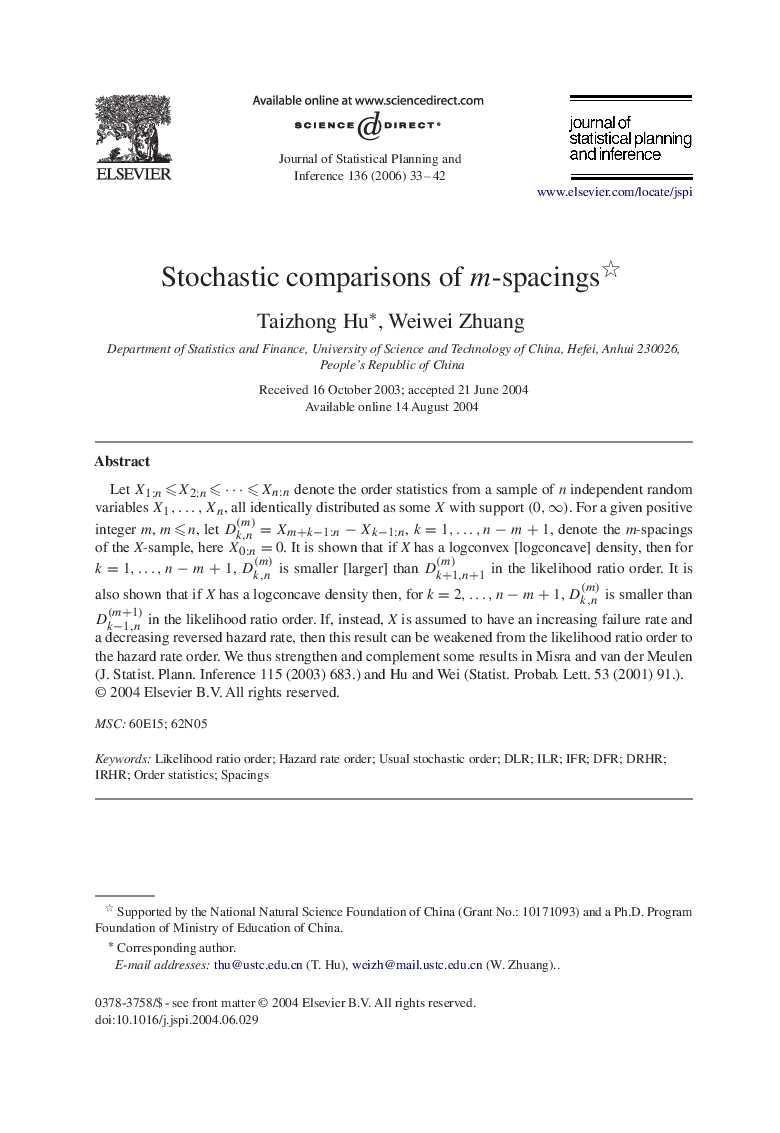| Article ID | Journal | Published Year | Pages | File Type |
|---|---|---|---|---|
| 1148979 | Journal of Statistical Planning and Inference | 2006 | 10 Pages |
Let X1:n⩽X2:n⩽⋯⩽Xn:nX1:n⩽X2:n⩽⋯⩽Xn:n denote the order statistics from a sample of n independent random variables X1,…,XnX1,…,Xn, all identically distributed as some XX with support (0,∞)(0,∞). For a given positive integer m , m⩽nm⩽n, let Dk,n(m)=Xm+k-1:n-Xk-1:n, k=1,…,n-m+1k=1,…,n-m+1, denote the m-spacings of the X -sample, here X0:n=0X0:n=0. It is shown that if X has a logconvex [logconcave] density, then for k=1,…,n-m+1k=1,…,n-m+1, Dk,n(m) is smaller [larger] than Dk+1,n+1(m) in the likelihood ratio order. It is also shown that if X has a logconcave density then, for k=2,…,n-m+1k=2,…,n-m+1, Dk,n(m) is smaller than Dk-1,n(m+1) in the likelihood ratio order. If, instead, X is assumed to have an increasing failure rate and a decreasing reversed hazard rate, then this result can be weakened from the likelihood ratio order to the hazard rate order. We thus strengthen and complement some results in Misra and van der Meulen (J. Statist. Plann. Inference 115 (2003) 683.) and Hu and Wei (Statist. Probab. Lett. 53 (2001) 91.).
